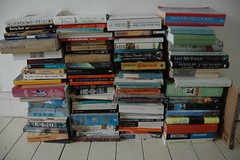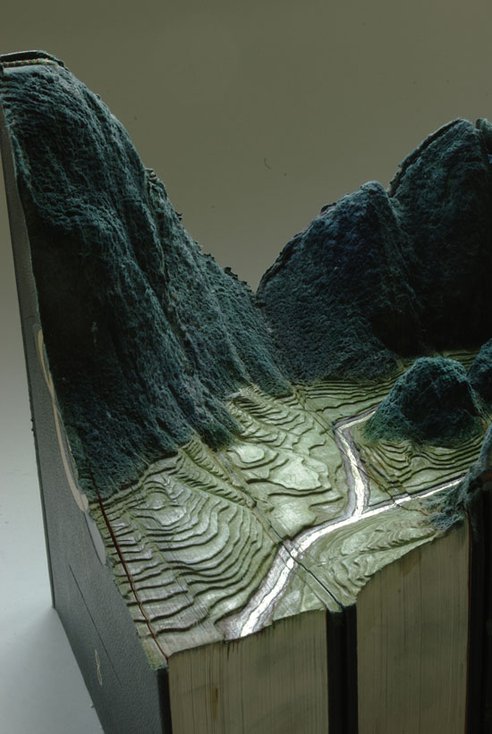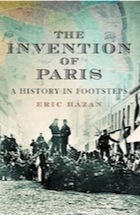
Who is Keri Smith?
I’m long overdue with a post about Keri Smith (kerismith.com), and what better way to make up for that then by sharing some of her awesome advice on creativity. Both of the pointers I’m quoting below actually come from a post called, Seven Steps to Getting Published, but as far as I’m concerned they’re all about creativity, creativity, creativity. And maybe even more than “publishing” they read like wise tips for successful book “midwifery”!
But first, by way of introduction it’s time to meet one of the most innovative book artists currently in the game, Keri Smith. It’s not too far a stretch to say that she is reinventing the concept of bookness, silly-putty-ing it into one of the most unconventional vehicles for creativity and adventure bound up between covers.
Here’s a more official blurb from her website:
Keri Smith is a Canadian conceptual artist and author of several bestselling books and apps about creativity including Wreck This Journal (Penguin) [check out her readers’ cool creations here: @WreckThisBook], This is Not a Book (Penguin), How to be an Explorer of the World -the Portable Life/Art Museum,(Penguin), Mess: A Manual of Accidents and Mistakes (Penguin), The Guerrilla Art Kit (Princeton Architectural Press), Finish This Book (Penguin), and The Pocket Scavenger (Penguin). (KeriSmith.com)
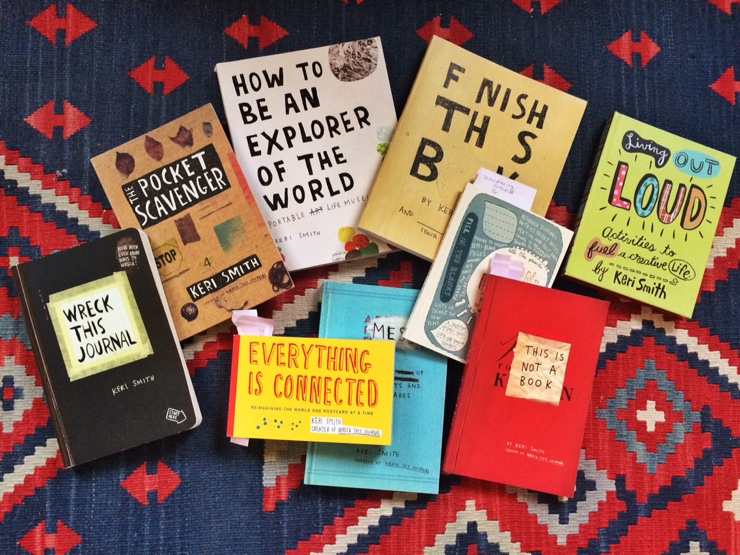
Keri Smith on the Carpet
I’m a little obsessed. For the last year I’ve been pouring over her work, each time feeling like I’m come across a co-conspirator. In fact, some of her books feel like they were born out of my own head. Only they weren’t. And her head’s done it better.
That said, I feel like these two creativity tips might have been borrowed from my head. They sound so familiar I could have written them myself. Only, I didn’t. She did. Again. So I’ll defer to Keri Smith.
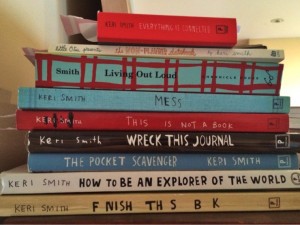
Keri Smith on the Shelf
1. Let your idea have it’s own life. This sounds a little strange but what I mean by this is once you have the idea in your head don’t try to control it too much. Let it tell you what form it should take. It really helps at this point to go for a long walk and just LISTEN it may be several long walks. Let the words and images evolve. With my most recent book it took over a year for me to know what form it would take. I had ideas for content and had begun writing but no overall format to tie it all together. I didn’t worry about it too much but just let it “be” for a while. One day while reading a book on “intuition in business”, a concept popped into my head. This concept was “play”, and it tied the whole book together and became my focus from that moment on.
2. Really enjoy yourself and the process of creating, the best work will flow out of you. People will respond the most to things you did with passion, as opposed to things you forced. Don’t worry about whether it would sell, or what’s hot in the moment your target market, or what a family member recommends. Be honest with yourself and the process. (KeriSmith.com)
See why I think that they’re both really more about book midwifery? They address the creative process from first flickering vision through generations of revising and refocusing and wrong turns and Ah-ha moments. They are all about the creative flow state that I’ve been discovering/pursuing over the last couple of years.
Listen. Play. Be honest. The rest will take care of itself.
Thanks, Keri Smith!
- House of Dreams (rosslynredux.com)
Like this:
Like Loading...






